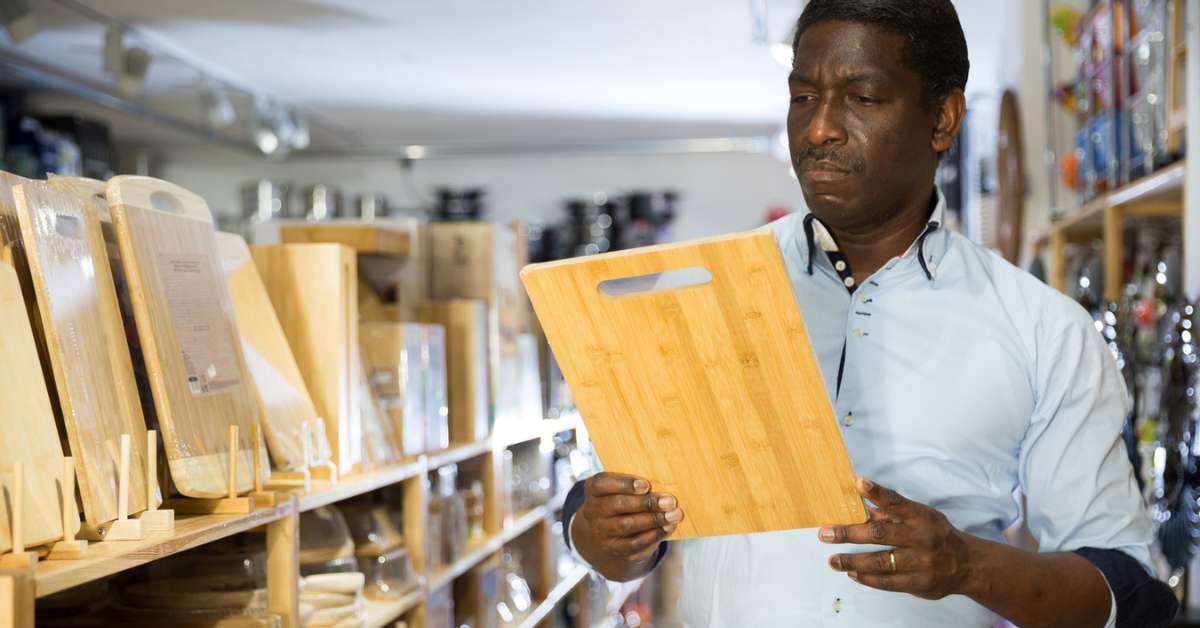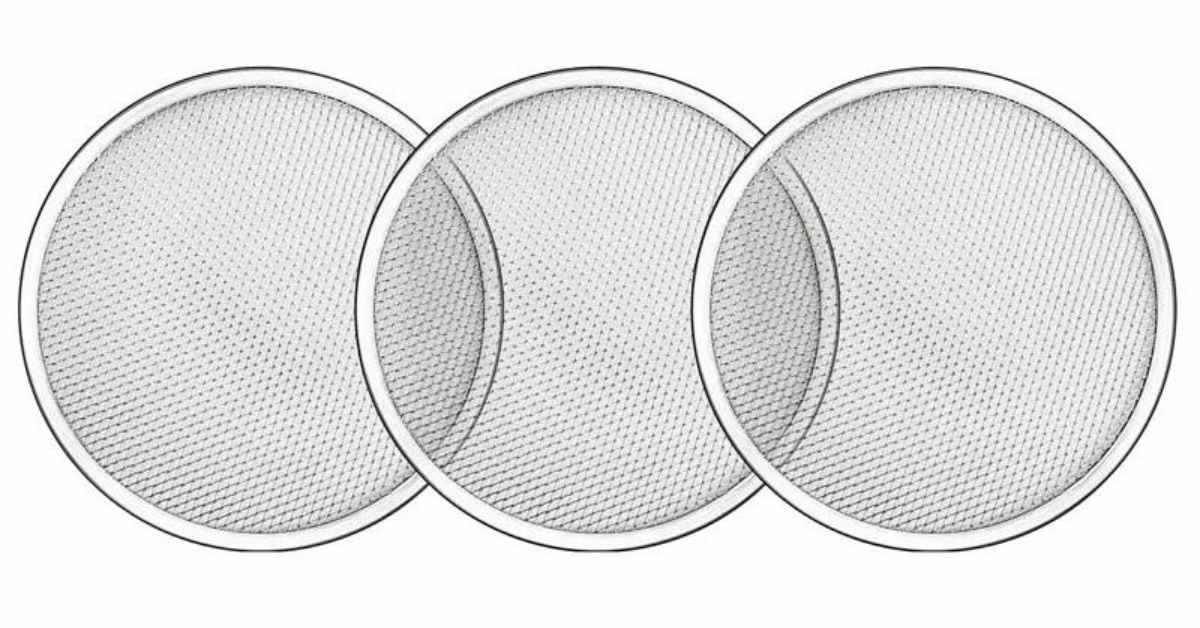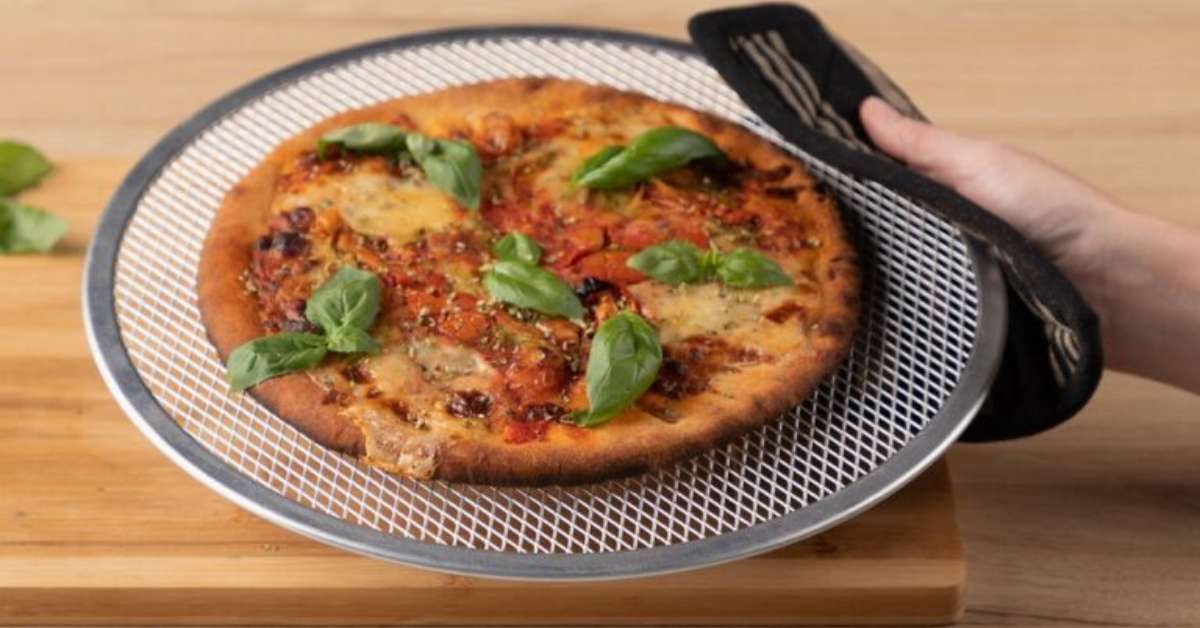Welcome to the ultimate guide on making caramel on induction cooktops! You’ve come to the right place if you’re a caramel lover. This comprehensive article takes you through creating delectable caramel on your induction cooktop.
Whether you’re a seasoned cook or a beginner in the kitchen, we’ll provide you with all the information you need to achieve that perfect golden-brown caramel consistency. Prepare to tantalize your taste buds and impress your friends and family with caramel-making skills. Let’s dive in!
Table of Contents
ToggleWhat is Caramel
Caramel is a beloved confectionary delight known for its rich, sweet, buttery flavor. It is a versatile ingredient in various desserts, sauces, and candies. But what exactly is caramel, and how is it made?
Caramel is created through a process called caramelization. It involves heating sugar, which undergoes a complex chemical reaction, transforming its properties. The sugar molecules break down and recombine to form new compounds that give the caramel a distinct taste and color.
The process begins by melting granulated sugar in a saucepan over medium heat. As the sugar heats up, it liquefies and starts to change color. It goes through different stages, from pale yellow to amber and finally to dark brown. The longer the sugar is heated, the deeper the flavor and color of the caramel.
There are also various types of caramel, each with its unique characteristics. Some common types include:
Light Caramel: This caramel has a delicate flavor and a pale golden color. It is typically used for drizzling over desserts, adding a subtle sweetness.
Dark Caramel: Dark caramel has a stronger, more robust flavor and a deep amber color. It is often used in recipes that require a bolder caramel taste, such as caramel sauces and candies.
Salted Caramel: This caramel incorporates a touch of salt, balancing the sweetness with a hint of savory. It has gained popularity recently and can be found in a wide range of sweet and savory dishes.
Benefits of Using Induction for Caramel-making
Using an induction cooktop offers several advantages over traditional stovetops when making caramel. Let’s delve into the benefits of using induction for caramel-making:
Precise Temperature Control
Induction cooktops provide precise temperature control, allowing you to achieve and maintain the ideal temperature for caramelization. Unlike gas or electric cooktops, which may have temperature fluctuations, induction cooktops offer consistent heat distribution, reducing the risk of burning or scorching the caramel.
Faster Heating
Induction cooktops use electromagnetic fields to heat the cookware directly. This technology results in faster heating times compared to other cooking methods. When making caramel, you can reach the desired temperature quickly and efficiently, saving you valuable time in the kitchen.
Safety Features
Induction cooktops prioritize safety. Since the heat is generated only in the cookware and not the cooktop’s surface, there is a lower risk of accidental burns. Additionally, induction cooktops often have features like automatic shut-off and child safety locks, adding extra protection while preparing your caramel.
Energy Efficiency
Induction cooktops are known for their energy efficiency. They transfer heat directly to the cookware, minimizing heat loss and ensuring maximum energy utilization. This efficiency benefits the environment and helps save on electricity bills in the long run.
Easy Clean-up
Cleaning up after caramel-making can be a sticky task. However, induction cooktops have a smooth, flat surfaces, making cleaning a breeze. As the cooktop doesn’t heat up directly, any caramel spills or splatters can be easily wiped away without getting burned onto the surface.
By harnessing the precision, speed, and safety features of induction cooktops, you can elevate your caramel-making experience and achieve consistent, delectable results.
How to Choose the Right Induction Cookware
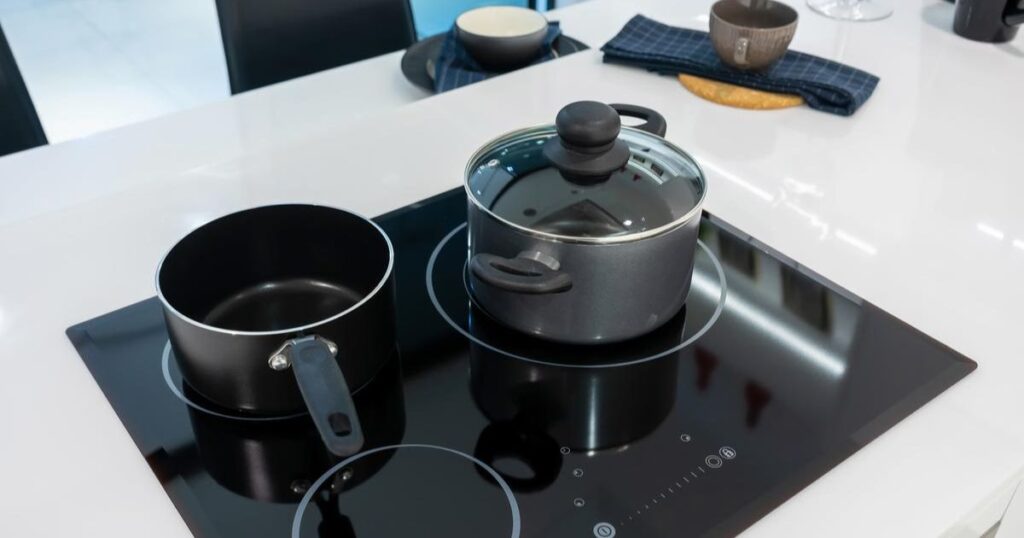
When making caramel on an induction cooktop, selecting the right cookware is essential for optimal results. Here are some factors to consider when choosing induction cookware for caramel-making:
Magnetic Compatibility
Induction cooktops require cookware that is magnetic to generate heat. To determine if your existing cookware is compatible, check if a magnet sticks to the bottom. If you still need to, invest in induction-compatible cookware specifically designed for use with induction cooktops.
Ensure the cookware has a flat and smooth bottom. This allows maximum contact with the induction cooktop surface, ensuring even heat distribution and preventing hot spots that could cause uneven caramelization.
Material
Opt for cookware made from magnetic materials such as stainless steel or cast iron, as they are highly compatible with induction cooktops. These materials distribute heat effectively, allowing for precise temperature control during caramel-making. Avoid cookware made of non-magnetic materials like aluminum or copper unless they have an induction-compatible base.
Size and Shape
Consider the size and shape of the cookware based on your caramel-making needs. A broad and shallow saucepan or skillet is ideal for evenly caramelizing sugar, providing a larger surface area for faster evaporation and better heat distribution.
Heat Resistance
Caramel-making involves high temperatures, so ensure that the chosen cookware is heat-resistant and can withstand the temperatures required for caramelization. Look for cookware that is labeled oven-safe or has high-temperature resistance.
Easy to Clean
Select cookware that is easy to clean after caramel-making. Non-stick coatings can prevent the caramel from sticking to the surface, but make sure they are induction-compatible and can withstand high temperatures.
Preparation for Making Caramel on Induction Cooktops
Before making caramel on your induction cooktop, it’s crucial to prepare appropriately to ensure a smooth and successful caramel-making experience. Here are the essential steps to follow for seamless preparation:
Gather the Ingredients:
- Granulated Sugar: The primary ingredient for making caramel.
- Water: A small amount of water is usually added to the sugar to facilitate the caramelization process.
- Optional Flavorings: You can add vanilla extract, salt, or other flavorings to enhance the taste of your caramel.
Assemble the Induction Cookware:
- Choose a wide and shallow saucepan or skillet that is induction-compatible and has a flat and smooth bottom. Ensure the cookware size suits the amount of caramel you intend to make.
- Place the cookware on the induction cooktop and ensure it is centered on the heating element.
Measure the Ingredients:
- Measure the appropriate amount of sugar and water depending on the recipe or desired quantity of caramel. It’s essential to follow the recipe’s measurements for the best results.
Prepare the Workspace:
- Clear your workspace and ensure you have all the necessary utensils within reach, such as a heat-resistant spatula, a candy thermometer, and a heatproof container for pouring the caramel.
Check the Induction Cooktop Settings:
- Familiarize yourself with the controls and settings of your induction cooktop. Ensure you know how to adjust the heat levels and set the desired temperature.
Have Safety Measures in Place:
- Keep a bowl of cold water nearby to cool down the bottom of the saucepan or skillet if needed.
- Use oven mitts or heat-resistant gloves to protect your hands from potential burns.
- If you have long hair, tie it back to prevent any accidents.
These preparation steps will prepare you to embark on your caramel-making journey on your induction cooktop. In the next section, we will explore the step-by-step process of making caramel from start to finish.
Making Caramel on Induction Cooktops Step-by-step
Now that you’re prepared, let’s dive into the step-by-step process of making caramel on your induction cooktop. Follow these instructions carefully to achieve perfectly smooth and luscious caramel:
Place the Induction Cookware: Ensure your induction cooktop is clean and residue-free. Place the induction-compatible saucepan or skillet on the cooktop and center it over the heating element.
Heat the Pan: Set the induction cooktop to medium heat. Allow the pan to heat up for a few minutes until it reaches an even temperature.
Add the Sugar: Carefully pour the measured granulated sugar into the preheated saucepan or skillet. Spread the sugar evenly across the bottom of the pan.
Melt the Sugar: Let the sugar melt gradually without stirring. As the sugar heats, it will start to liquefy and form clumps. Gently swirl the pan occasionally to promote even melting.
Monitor the Color: Keep a close eye on the color transformation of the sugar. It will go through different stages, from pale yellow to amber, turning a deep golden brown. Adjust the heat as needed to control the caramelization process.
Check the Temperature: Once the sugar has melted completely and achieved the desired color, you can use a candy thermometer to check the temperature. The caramelization point typically ranges between 320°F (160°C) to 350°F (175°C), depending on the recipe. Avoid exceeding this temperature range to prevent burning.
Add Flavorings Optional: If desired, this is the time to add flavorings such as vanilla extract or a pinch of salt. Be cautious, as the mixture may bubble vigorously when adding liquid ingredients.
Remove from Heat: Once the caramel has reached the desired color and temperature, remove the saucepan or skillet from the heat to halt the cooking process. Remember that residual heat will continue to cook the caramel, so it’s better to err on the side of a slightly lighter color.
Transfer and Store: Carefully pour the hot caramel into a heatproof container like a glass jar or a metal bowl. Be cautious, as the caramel is extremely hot and can cause severe burns. Allow the caramel to cool completely before sealing the container. It can be stored at room temperature for several weeks.
Congratulations! You’ve successfully made homemade caramel on your induction cooktop. Now you can drizzle over desserts, incorporate it into recipes, or enjoy it straight from the jar. In the next section, we will provide tips and troubleshooting advice to help you master caramel-making on induction.
Common Caramel-making Issues on Induction
Making caramel on an induction cooktop can sometimes come with its challenges. Here are some common issues you may encounter and troubleshooting tips to help you overcome them:
Sugar Crystallization
- Cause: Sugar crystals can form and cause the caramel to become grainy instead of smooth.
- Solution: To prevent crystallization, moisten all the sugar with water before heating. Avoid stirring vigorously once the sugar starts to melt. Add some corn syrup or lemon juice to the mixture to inhibit crystallization.
Burnt or Bitter Caramel
- Cause: Caramel can quickly burn if the heat is too high or cooked too long, resulting in a bitter taste.
- Solution: Use medium heat and closely monitor the color and aroma of the caramel as it heats. Adjust the heat or remove the caramel from the heat source when it reaches the desired color. If you notice a burnt smell, discard the caramel and start again.
Caramel Not Darkening
- Cause: If the caramel is not darkening as desired, it may be due to low heat or insufficient cooking time.
- Solution: Increase the heat slightly and continue cooking, ensuring the sugar mixture is well-heated and reaches the appropriate temperature range for caramelization. Be patient and allow the caramel to darken gradually.
Sticky or Hardened Caramel
- Cause: Caramel can become sticky or hardened if cooked too long or cooled for an extended period.
- Solution: Remove the caramel from the heat when it reaches the desired color and immediately transfer it to a heatproof container to cool. If the caramel hardens, gently heat it over low heat or in a microwave to soften it before using.
Uneven Heat Distribution
- Cause: Induction cooktops may have uneven heat distribution, resulting in uneven caramelization.
- Solution: Stir the sugar mixture gently and ensure the cookware is centered on the heating element. Adjust the heat settings or move the cookware slightly to promote more even heat distribution if necessary.
Alternative Caramel-making Methods on Induction
While the traditional method of making caramel involves heating sugar and water on an induction cooktop, there are alternative approaches you can explore. Here are a few techniques you can try for making caramel on your induction cooktop:
Dry Caramel Method:
- This method eliminates water use and involves heating granulated sugar directly in a saucepan on your induction cooktop.
- Place the saucepan on medium heat and add the desired amount of sugar.
- Stir the sugar continuously as it begins to melt and caramelize.
- Be cautious, as the sugar can burn quickly. Adjust the heat as necessary and continue stirring until the sugar reaches your desired caramel color.
Double Boiler Method:
- The double boiler method provides a gentler heat and reduces the risk of burning the caramel.
- Fill the bottom pot of a double boiler with water and place it on the induction cooktop.
- Place a heatproof bowl or the top jackpot of the double boiler on top, ensuring it fits snugly.
- Add the sugar and ingredients to the total pot and heat over medium heat.
- Stir the sugar occasionally until it melts and caramelizes to your desired color.
Oven Method:
- This method involves using your induction cooktop in combination with an oven.
- Preheat your oven to a specific temperature, as stated in your caramel recipe.
- Heat the sugar and water on the induction cooktop in an oven-safe saucepan or skillet until it melts and caramelizes slightly.
- Transfer the saucepan or skillet to the preheated oven and continue the caramelization process until the desired color is achieved.
It’s important to note that these alternative methods may require slight adjustments in cooking time and heat levels. Following a trusted recipe or experimenting with caution is recommended to achieve the desired caramel consistency and flavor.
Storage and Serving Tips for Caramel on Induction
Once you have made a batch of delicious caramel on your induction cooktop, you must know how to store it properly and serve it in various delightful ways. Here are some helpful tips:
Storage Tips:
- Allow the caramel to cool completely before storing it.
- Transfer the caramel to an airtight container or jar. Ensure that the container is clean and dry to prevent any moisture from causing the caramel to become grainy.
- Store the caramel in the refrigerator for optimal freshness and longevity. It can typically be kept in the fridge for up to two weeks.
- Warm the refrigerated caramel slightly if you prefer a pourable consistency before using it.
Serving Tips:
Caramel can be enjoyed in numerous ways. Here are a few serving ideas to inspire you:
- Drizzle warm caramel over ice cream, pancakes, or waffles for a decadent treat.
- Use caramel as a dip for apple slices or other fruits.
- Incorporate caramel into your baked goods, such as cakes, cookies, or brownies, for a delightful flavor twist.
- Spread caramel between layers of a cake or use it as a filling for pastries.
- Add a dollop of caramel to your coffee, hot chocolate, or milkshake for a luscious touch.
Experiment with different recipes and serving ideas to make the most of your homemade caramel. Remember to store any unused caramel properly to maintain its freshness and quality.
Caramel Variations to Try on Induction
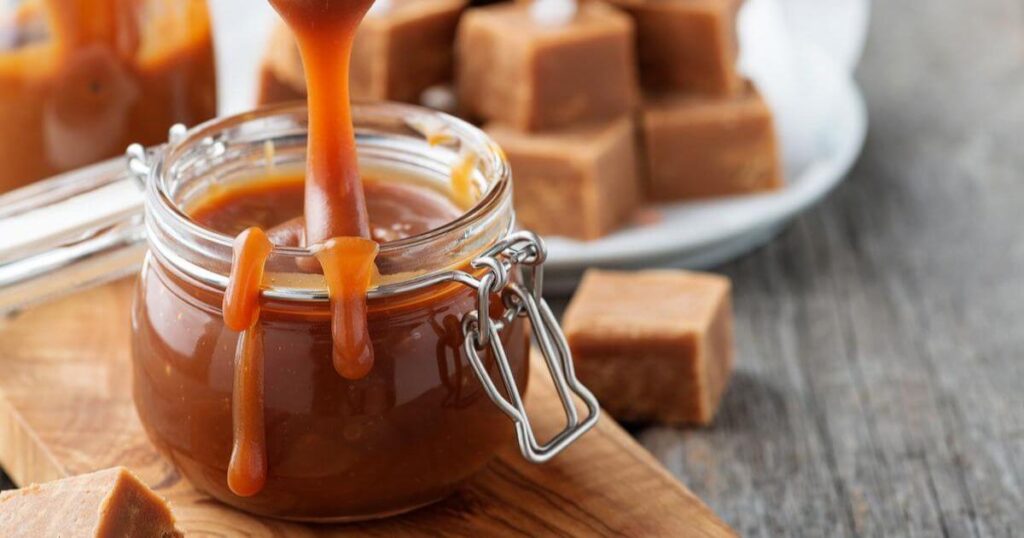
While classic caramel is undeniably delightful, there are various variations you can explore to add a unique twist to your caramel creations made on your induction cooktop. Here are some delicious caramel variations to try:
Salted Caramel
Add a pinch of sea or flaky salt to your caramel to perfectly balance sweet and salty flavors. The salt enhances the caramel’s richness and adds a delightful contrast.
Spiced Caramel
Infuse your caramel with warm, aromatic spices like cinnamon, nutmeg, or cardamom. These spices impart a cozy and festive flavor to your caramel, making it perfect for fall and winter treats.
Bourbon or Whiskey Caramel
Incorporate a splash of bourbon or whiskey into your caramel to create a sophisticated and indulgent flavor profile. The alcohol adds depth and complexity to the caramel, making it a delightful addition to desserts and drinks.
Espresso or Coffee Caramel
Enhance the caramel’s flavor with a hint of espresso or strong brewed coffee. The coffee notes complement the sweetness of caramel and create a harmonious combination for coffee lovers.
Nutty Caramel
Add chopped nuts like almonds, pecans, or walnuts to your caramel for a delightful crunch and nutty flavor. Toast the nuts beforehand to enhance their nuttiness.
Coconut Caramel
Use coconut milk or coconut cream instead of water when making your caramel. The coconut adds a tropical twist and a creamy texture to the caramel, perfect for incorporating into various desserts.
Chocolate Caramel
Melt some dark or milk chocolate into your caramel to create a luscious and irresistible chocolate caramel. The combination of caramel and chocolate is a match made in heaven.
Feel free to experiment and combine variations to create unique caramel flavors. These variations can be used in desserts, sauces, or even as a standalone treat.
Frequently Asked Questions
Is induction suitable for all types of caramel?
Yes, induction cooktops are suitable for making various types of caramel, including traditional caramel made with sugar and water. The precise temperature control of induction allows for better caramelization control.
How do I know when the caramel is ready?
A: Caramel is ready when it reaches the desired color, usually a deep golden amber or rich caramel hue. You can also use a candy thermometer to monitor the temperature. Caramelization typically occurs between 320°F (160°C) and 350°F (175°C).
Can I use a non-stick pan to make caramel on induction?
You can use a non-stick pan to make caramel on an induction cooktop. Just ensure that the non-stick pan is induction-compatible and can withstand high temperatures.
Can you make caramel on an induction hob?
Absolutely! Induction hobs are well-suited for caramel-making. Their precise and instant heat control makes achieving the desired caramel consistency and color easier.
Can I cook directly on induction?
Induction cooktops require the use of induction-compatible cookware. You can only cook directly on the induction surface with the appropriate cookware. Induction works by generating an electromagnetic field that heats the cookware directly.
What is the disadvantage of induction cooking?
While induction cooking offers many advantages, one potential disadvantage is that it requires using induction-compatible cookware. Cookware must have a magnetic base to work effectively on induction. Additionally, induction cooktops tend to be more expensive than other cooktops.
Conclusion
In this ultimate guide to making caramel on induction cooktops, we have explored the wonderful world of caramelization and how it can be achieved with precision on an induction cooktop. We’ve covered the basics of caramel, discussed the benefits of using induction for caramel-making, and provided tips for choosing the right induction cookware. We’ve also delved into the preparation steps, troubleshooting common issues, and alternative methods for caramel-making on induction.
Additionally, we’ve shared storage and serving tips, delicious caramel variations to try, and answered frequently asked questions. With this comprehensive knowledge, you can confidently create delectable homemade caramel on your induction cooktop. So, gather your ingredients, follow the steps, and enjoy the sweet rewards of your homemade caramel creations. Happy caramel-making!




